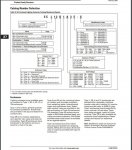The CN35 is just their standard Freedom series contactor, they just rate the contacts a little differently for tungsten loads. The coils are exactly the same as on their motor starters. VA varies by size (we don't know what size these are, do we?), but the voltage tolerance is +10%, -15%; pretty standard for the industry.
Although nobody at Eaton pays me to care, lets face it, they don't make junk and if they had a major problem with coil burn-out on every contactor they made, they would be out of the business. The point is that this is not a product flaw, this is something going on at YOUR facility, and you have to find it. Masking the symptoms by using fuses and/or surge suppressors is just kicking the can down the road.
Oh and coil surge suppressors that go on the coils are to suppress the surges THEY cause for other things on the same circuit. That wouldn't do anything for the coil itself. An SPD at the service entrance would help if it is crap coming in from the utility lines, but if something inside of your facility is making dirty power with lots of spikes, it might not do anything for you. Surge suppressors are really TRANSIENT surge suppressors, but for some reason they stopped calling them that. They don't do a thing for sags and swells , a swell being a slow increase in voltage.




